Menu

About 95% of items shipped from the United States skip needing a licence. This shows how big and complex US export rules are.
Still, it’s on the exporter to decide if their product needs a licence. Many seek help from the U.S. Commercial Service for this tough task. The Bureau of Industry and Security (BIS) and the U.S. Department of State’s Directorate of Defence Trade Controls (DDTC) manage items needing special approval. Knowing which agency to check with is key in finding out if you need a licence. More info can be found here, on the US export licences site.
Getting to know these facts is vital if you work in international trade. It ensures you follow the US’s trade rules and US export compliance.
US export rules can be tricky. But, knowing the main players helps. The Bureau of Industry and Security (BIS) and the Directorate of Defence Trade Controls (DDTC) are key. They look after making sure exports fit with keeping the country safe and meeting foreign policy goals.
In the US, the BIS and the DDTC lead the way on export control. They have specific jobs in checking that exports are okay. This makes them very important in the whole export process.
The BIS checks export license applications. This is under the Export Administration Regulations (EAR). They also look at who’s using what gets exported. They do this around the world to stop things being used in the wrong way.
The BIS runs training to help people understand and follow the rules better. They have a list that helps businesses know if the people they’re dealing with are allowed to be part of the sale.
The DDTC focuses on things for defense under the International Traffic in Arms Regulations (ITAR). It makes sure defense-related exports are okay, fitting with what the US wants for security and in foreign policies.
Both agencies work together to check export deals well. They make sure everyone sticks to the rules. This keeps things running smoothly and avoids big fines for getting it wrong.
To do well in exporting, knowing what BIS and DDTC do is crucial. Follow their rules to avoid problems and make things easier for your business.
Finding out if your product needs an export licence is crucial. This ensures you follow U.S. export rules. You start by looking at the Commerce Control List (CCL). Here, check for an Export Control Classification Number (ECCN).
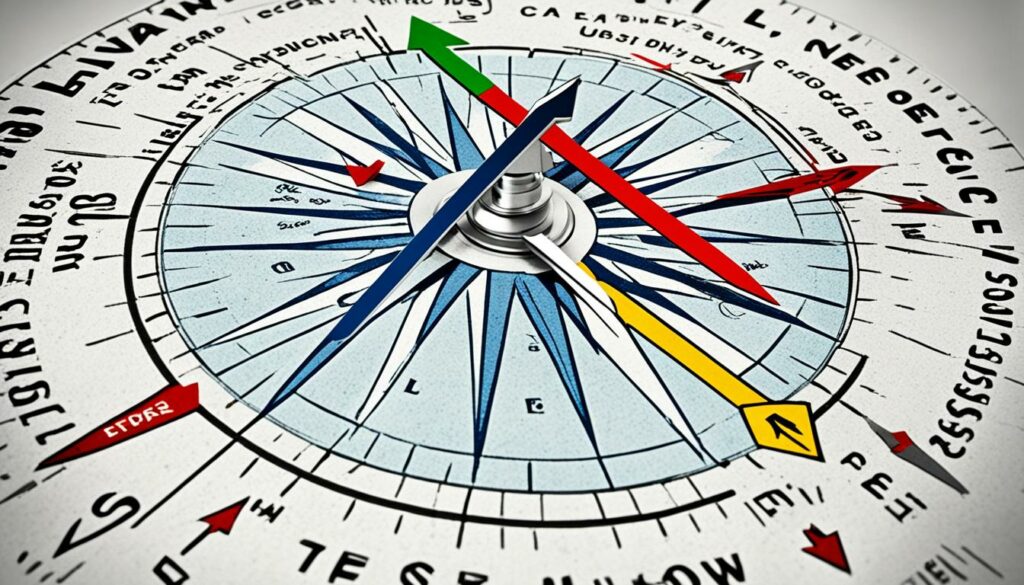
To check if you need an export licence, use the CCL first. If your item isn’t there, it’s likely EAR99. Most U.S. exports don’t need a licence, known as NLR. But, rules change based on where it’s going, who’s getting it, and how it’s used.
Normally, EAR99 classification items don’t need a licence. Yet, a few exceptions apply. For example, EAR99 goods might need a licence for security reasons or if they’re going to sensitive places.
Here’s a quick look at licences:
| Classification | Licence Requirement |
|---|---|
| Listed on CCL | Licence required, refer to ECCN |
| EAR99 | Generally no licence, except for specific destinations/end users |
Knowing how to find out if you need a licence means you can follow U.S. laws. This makes trade safer and builds better relationships worldwide.
The Export Administration Regulations (EAR) control the shipment of goods that could be used for both commercial and military purposes. They are overseen by the Bureau of Industry and Security (BIS). This body works to keep things safe, prevent the spread of dangerous goods, and meet goals in foreign policy. The EAR make it clear that you must have a proper licence to export certain items. They also offer a guide to following the export rules.
The EAR set out rules and steps for making sure exports are done correctly. They mostly cover products that are part civilian and part military. BIS checks export and shipping licence requests. They make sure everything follows the set out rules.
The Commerce Control List (CCL) is a key part of the EAR. It lists items that the BIS oversees, putting them into groups based on their use. For each item, there are details on what kind of licensing is needed. The CCL helps exporters know the rules and works to keep the country safe.
Each item the EAR covers gets an Export Control Classification Number (ECCN). This number shows how strictly the item is controlled and what licences are needed. Knowing an item’s ECCN helps you manage it according to the EAR. If an item doesn’t appear in the CCL, it might be under ECCN99. This means there are fewer rules but the item’s use still matters.
It’s key for U.S. exporters to check the EAR, learn about the CCL and ECCN. Doing so helps them stay on the right side of the law and prevent any export mistakes.
The Bureau of Industry and Security (BIS) is key in export compliance. It looks closely at goods that might have dual uses. The Export Administration Regulations (EAR) set out guidelines for tracking and classifying exports. This is to make sure they meet national security and foreign policy aims. The BIS also checks over export items and their uses under the EAR.
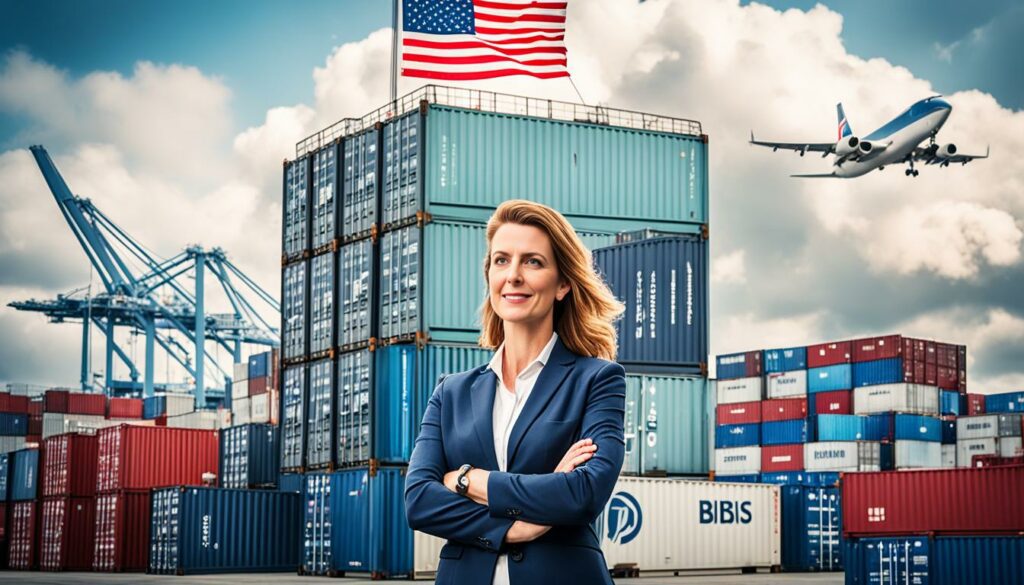
The BIS regulates exports by managing lists like the Commerce Control List (CCL). It says what permissions are needed to ship things out. The BIS changes what’s needed for specific goods, like guns and bullets. It also works with other countries. For example, it joins the U.S.-Japan-Korea Trilateral Commerce and Industry Ministerial Meeting. They work together to set up common rules and ways to make sure people follow them.
Having a strong Export Compliance Program (ECP) is vital for businesses. The BIS helps set up a good plan for this. The plan includes clear steps, keeping good records, training often, and checking to make sure everything is done right. This helps companies make sure they are following all the rules and not breaking any laws.
The President’s Budget for 2025 is giving extra support to the Commerce Department’s work. This makes managing export rules very important for companies. Besides, the BIS says it’s important to keep good records for every export. This is to prove all the rules were carefully followed.
The U.S. Department of Commerce is working on new things to keep up with changes. For example, it’s looking into vehicles with technology from the PRC, and doing a survey on how good the supply chain for computer chips is. Keeping up with these changes and adjusting ECPs helps companies stay on track and be efficient.
The Commerce Control List (CCL) classifies various items. It does so based on their technical details and export limits. For exporters, knowing these categories is key. It helps make sure they follow the export rules.
The CCL has ten main categories. They cover things like nuclear materials, chemicals, and electronics. Also, they include computers, telecommunications, security items, and aerospace tech. Each category explains the items it includes. This makes it easier to decide how to classify and export them.
Each of the ten categories has five product groups. These groups are:
This setup helps exporters find the correct ECCNs. ECCNs are Export Control Classification Numbers. They’re crucial for meeting the Export Administration Regulations.
| Category | Description | t
|---|---|
| Nuclear materials | Includes materials, facilities, and equipment connected to nuclear work. | t
| Chemicals | Covers toxic substances, like chemical weapons parts. | t
| Electronics | Includes small electronics, parts, and systems. | t
| Computers | Has systems, parts, and equipment for computing. | t
| Telecommunications | Deals with sending and receiving telecom gear. | t
| Information Security | Includes ways to keep info safe, like cryptography. | t
| Sensors and Lasers | Has systems for detecting and guiding using sensors and lasers. | t
| Navigation and Avionics | Deals with flying tech and related parts. | t
| Marine | Includes sea-based systems and gear. | t
| Aerospace and Propulsion | Deals with flying crafts and the tech they use. | t
By understanding the CCL’s groupings and what the items need for classification, exporters can better keep up with their compliance duties. This way, they reduce the chance of breaking export rules.
The Directorate of Defence Trade Controls (DDTC) oversees the export of defence products and services from the U.S. It enforces the International Traffic in Arms Regulations (ITAR). This ensures the export of sensitive technologies meets national security and foreign policy goals. Knowing the DDTC’s role well helps in following ITAR rules when exporting defence goods.
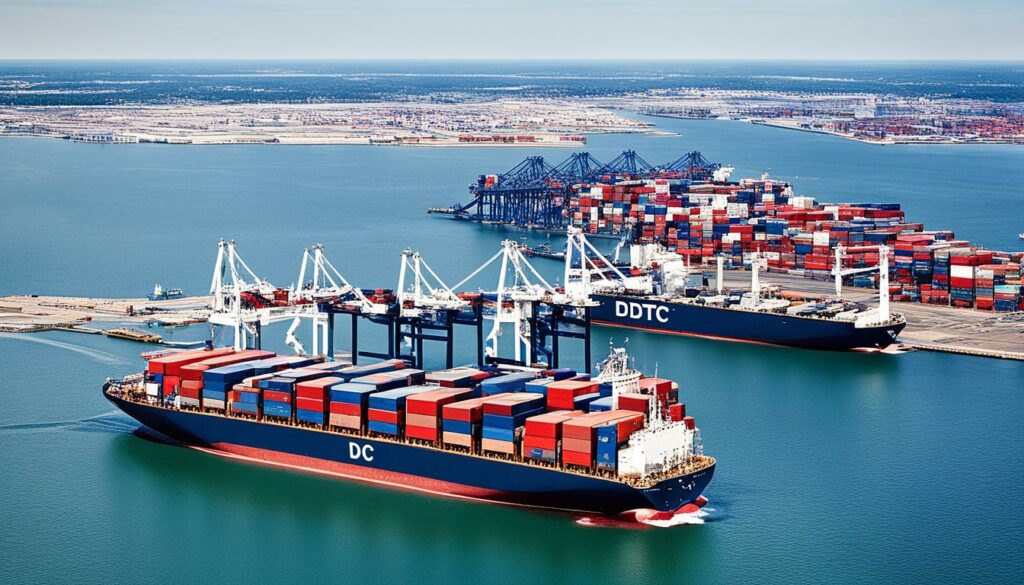
The DDTC has three main offices. They are the Office of Defence Trade Controls Licensing, Compliance, and Policy. They all oversee the export of defence items listed on the U.S. Munitions List. Any U.S. entity involved with making, exporting, or brokering defence items must register with the DDTC.
ITAR is key to what the DDTC does. The Department of State and the Department of Defense oversee ITAR. It controls the export, temporary import, and brokering of defence items. This includes not only physical items but also their technical data and assistance. If in doubt, a commodity jurisdiction request can clarify if ITAR applies.
An important point is that defence articles under ITAR cover many types of goods. From guns and ammunition to military electronics and energy weapons. Companies must get the right licenses, agreements, or exemptions before trading these items. It’s crucial to follow all export rules to stay ITAR compliant and meet the DDTC’s guidelines.
The Office of Foreign Assets Control (OFAC) started in December 1950. It looks after financial sanctions based on U.S. foreign policy and security goals.
OFAC focuses on countries, people, and groups like terrorists with economic and trade limits. It has a list that people in business must check to avoid those on sanctions.
Breaking OFAC rules can lead to big fines. So, following OFAC rules is key for anyone in global business.
About 15,000 firms and people are on OFAC’s special list. If they have over 50% in other businesses, those businesses face sanctions too. Companies should not deal with such targets, stop their money, and tell OFAC about any dealings.
OFAC says companies should tell if they break rules. This might lower the fines, but there’s no promise they won’t get fined at all.
Even foreign parts owned by U.S. companies must follow OFAC rules. This shows that OFAC rules are worldwide. There are rules that make some deals okay, but the banned deals can change with U.S. policy goals.
Keeping up with changes on OFAC’s site is key to following rules. Meeting OFAC compliance is essential, not just to stay legal, but to protect a company’s name and avoid serious fines.
Conducting due diligence in exports is crucial for following U.S. export rules. It requires deep research into who the final users are and strict compliance with rules. The Bureau of Industry and Security (BIS) provides detailed guidelines. It’s vital to understand and apply these procedures carefully.
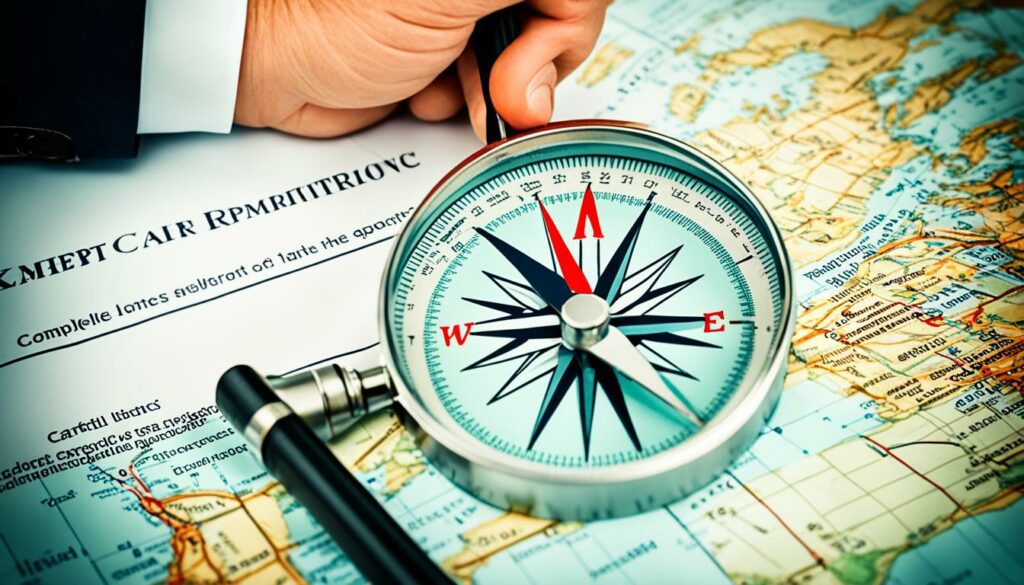
End user research means checking who might use the products and what they do. This helps make sure products don’t end up in wrong hands or uses. Thorough research on end users is essential for spotting and reducing risks in exports.
Being strict on export best practices involves having a strong Export Management and Compliance Program. It’s a big document, over 49 pages, according to BIS. A crucial part is ongoing education, which has another extensive section, 57 pages long. Keeping good records is also important, detailed in 126 pages, to track all deals properly.
| Key Element | Pages Covered |
|---|---|
| Compliance Training | 57 |
| Export Management and Compliance Program (EMCP) | 49 |
| Recordkeeping | 126 |
Focusing on due diligence, researching end users thoroughly, and following strong compliance practices helps exporters with U.S. rules. This not only supports national safety but also protects their business interests.
Having a good Export Compliance Program (ECP) is vital for companies that export. It helps them follow the law and keeps things running smoothly. This is because they know and follow the rules for exporting goods.
To be successful, an Export Compliance Program needs to cover all parts of the exporting process. This includes getting senior managers to really support the rules. They should show this by signing a statement every year that says they do.
Businesses also need written plans that explain how they will follow the rules. These plans must be updated as the rules change. Everyone working there should know how to follow the rules. So, doing lots of training is important. This stops mistakes that can cause problems.
Keeping detailed records of exports is key to a good ECP. These records prove the company is following the rules. Regulators want to see these records to check if everything is done right.
| Record Type | Retention Period | Importance |
|---|---|---|
| Export Licences | 5 years | Proves compliance with licensing requirements. |
| Shipping Documents | 5 years | Ensures accurate tracking and reporting of exported goods. |
| Employee Training Records | 3 years | Validates ongoing compliance training efforts. |
| Internal Audit Reports | 5 years | Assesses the efficacy of the compliance program. |
In the US, most exports don’t need a special licence. But, having a good plan for following the rules is still very important. Using SNAP-R, a free online system, can make following these rules easier. It helps exporters meet the regulations without a lot of hassle.
It’s not enough to just make a plan and forget about it. Companies must update their plans and keep learning about new rules. This is how they can avoid problems with the law. By always looking to get better and with support from top management, companies can export smoothly and safely.
The first step in submitting export licence applications is to use the SNAP-R system. This system makes the process of getting an export licence smoother. It helps everything to run more efficiently.

The SNAP-R system allows exporters to send applications and requests electronically. This makes sending documents faster. Companies also stay up to date with the rules this way.
To use SNAP-R, exporters need to get a CIN from the BIS website first. This is an important step. It lets companies handle their applications directly. Making sure all your application details are right can help you avoid delays.
Knowing what documents to send and how to format them is also key. It makes it easier for your application to go through without problems.
To show what you need for an export licence, take a look at this table:
| Requirement | Description |
|---|---|
| Technical Specifications | Details about the product’s technical aspects, especially for High Performance Computers (HPCs). |
| End-User Details | Information on the end user, including their location and intended use of the product. |
| Configuration of HPC | Specifics about how the HPC is configured, including any unique components or functionalities. |
| Letter of Explanation | A comprehensive letter addressing system configurations, end-uses, remote access considerations, and technical specs. |
| Certificates and Forms | Import/End-User Certificates and BIS-711 forms as mandated for certain exports, particularly for Computer Tier 3 countries. |
Using SNAP-R well not only means following the rules but also making sure you’ve got everything needed. Checking off a list before you submit can help. It makes sure your data is correct. Then your application is less likely to be sent back.
The Export Administration Regulations (EAR) cover many items. But, we must remember other important US government regulations. These include the International Traffic in Arms Regulations (ITAR). ITAR controls the export of defence items and services. It is managed by the Directorate of Defence Trade Controls (DDTC). ITAR ensures items like military goods are properly overseen and require the right licences to export.
The Office of Foreign Assets Control (OFAC) looks after financial sanctions and trade compliance with specific nations and entities. Following trade compliance regulations by OFAC is key to stay out of legal trouble. The Nuclear Regulatory Commission (NRC) looks after nuclear materials and equipment. It focuses on non-proliferation and safety goals, setting licensing requirements.
Exporting health and safety items, such as pharmaceuticals and medical devices, involves the U.S. Food and Drug Administration (FDA). The FDA oversees these exports to make sure they’re safe. You might need export licences from them. Understanding and following rules set by these groups helps complete export licence requirements. It also makes trade compliance regulations better.
The Export Control Classification Number (ECCN) is crucial in the world of export rules. It shows what’s needed to export certain items legally. Knowing how to find your item’s ECCN is key to following the rules.
There are a few ways to get an ECCN. One easy way is to ask the maker or seller. They know their goods best. And they understand the guidelines of the Commerce Control List (CCL) very well.
You can also figure out the ECCN on your own. This means checking the CCL and matching it with your item’s specifications. Doing this correctly requires good technical knowledge and an understanding of the rules.
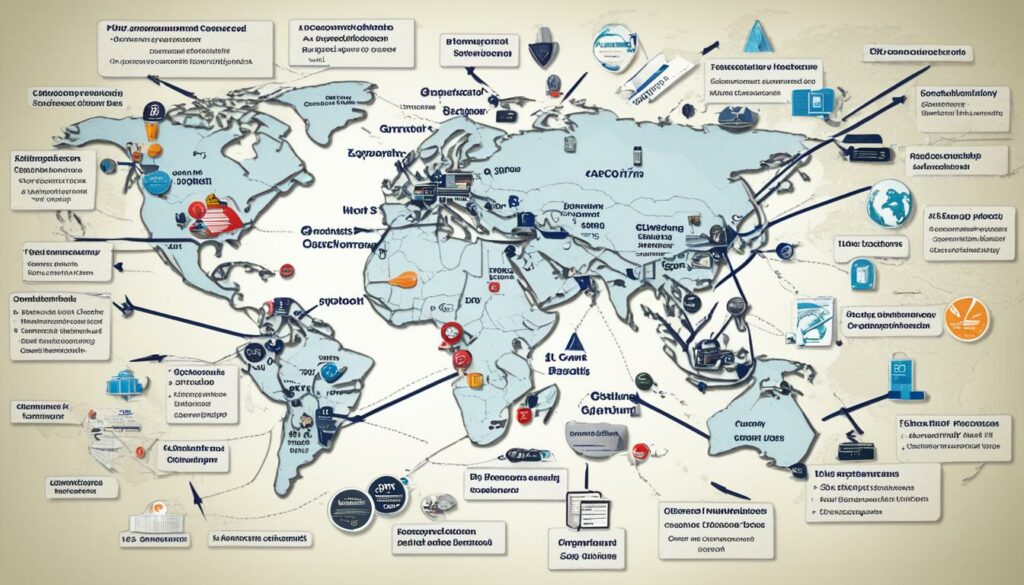
If you still can’t pinpoint the ECCN, you can ask for help from the Bureau of Industry and Security (BIS). They will judge and assign the right ECCN for your item.
The ECCN is a five-alphanumeric code found in the CCL, which is part of the Export Administration Regulations (EAR). It separates items not needing a license from those that do. By checking the CCL, you can tell your item’s ECCN or if it’s simpler, it falls under EAR99.
Getting the right ECCN is important for following export laws. It’s necessary for checking if you need a license to export your item. Keeping up with ECCN updates is crucial for exporting legally.
Trade compliance involves following domestic and international laws. These laws cover how goods can be traded and their proper taxation. It’s key to avoid fines and keep business smooth.
Rules for international trade look after the fair exchange of goods worldwide. They follow global standards. The Harmonized System (HS) is used by over 200 countries to categorise goods.
This system determines tariffs, shows where goods come from, and guides export controls.
Customs laws oversee goods entering and leaving a nation. They ensure the right taxes and duties are paid. Getting these right is crucial. Mistakes can mean delays or even losing the goods.
Also, the correct value of goods must be stated to work out the right tax. This affects how much importing the goods will cost.
| Aspect | Impact | Compliance Requirement |
|---|---|---|
| Classification of Goods | Duty Rates, Export Control | Harmonized System (HS) |
| Origin of Goods | Preferential Duty Rates | Rules of Origin |
| Valuation of Goods | Customs Tariffs | World Trade Organisation Valuation Methods |
Every importer and exporter must know and follow trade and customs laws. Not doing so can cause many issues. This shows why paying close attention to these laws is so important.
Dealing with export transactions well needs careful attention to paperwork and using the Automated Export System (AES). Most items sent from the U.S., almost 95%, don’t need an export license. But, it’s still very important to get the export details and documents right to follow the laws.
Exporters must make sure to clearly show all export classifications and license numbers in their paperwork. Under the Export Administration Regulations (EAR), items will have an Export Control Classification Number (ECCN) or be EAR99. Many of these won’t need a license. For EAR items going through the U.S. Postal Service or big shipping companies, you might need to mark an “NLR”, meaning “No License Required”.
Using AESDirect in the Automated Commercial Environment (ACE) is key for easy digital export filing. This system makes sure exporters follow the rules by accurately putting their export details and license numbers. Knowing how to use AESDirect well is important to meet the rules and avoid any mistakes or legal issues.
The Bureau of Industry and Security (BIS) and the Directorate of Defence Trade Controls (DDTC) are key. BIS handles dual-use goods, commercial items, and some armaments. DDTC looks after the export of defence items and services.
The BIS deals with exporting dual-use goods. It ensures compliance with the Export Administration Regulations (EAR). BIS also guides on setting up a good Export Compliance Program (ECP).
The DDTC oversees defence export under the ITAR rules. It requires companies to register and possibly get licences. This is to follow the strict ITAR guidelines.
Check the Commerce Control List (CCL) for the item’s ECCN number. If it isn’t there, it might be EAR99. This means it might not need a licence except in some specific cases.
If an item is classified under EAR99, it often won’t need a licence. Yet, some situations may still require you to have one.
The EAR govern exports of goods with both military and commercial uses. It aims to protect national security and foreign policy. Items are either classified with an ECCN or as EAR99.
The CCL has ten categories and five product groups, each with an ECCN. It shows which goods require licensing and follow-up for compliance.
Having a good Export Compliance Program (ECP) is key. It means keeping accurate records, training staff in rules, and following BIS advice. This ensures you follow export laws.
OFAC enforces sanctions to meet US foreign policy and security goals. Exporters must check their list to avoid dealing with restricted groups.
Due diligence helps ensure you’re not exporting to banned people or for forbidden uses. It includes researching users and being very careful in following the rules.
An ECP should keep up-to-date records, ensure correct licences, train staff, and review policies often. Having clear plans and taking part in training helps too.
You can apply through SNAP-R online. You need to register for a Company Identification Number (CIN) first.
Yes, some other agencies like ITAR (DDTC), OFAC, and more, might have their own rules for some exports. This depends on what you’re exporting.
You can get an ECCN in a few ways, like from the supplier or by checking the CCL. Reaching out to BIS for help is another way. It’s important to get this right for obeying the rules.
Knowing about trade and customs laws is vital for exporting legally and avoiding fines. Exporters need to be aware of these laws on a global scale and how they interact with US rules.
You need the right export classification and licence numbers in your reports. Using the Automated Export System (AES) and good documentation practices are key for following the law.